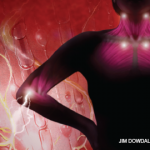The development of smartphone apps and global positioning technology has carried data analytics several steps further. For example, it provides the technology behind the workout wristband. It also helps the followers of Yelp find the top-rated pho ga in any neighborhood, anywhere. Retailers can track your movements and analyze your shopping idiosyncrasies as you meander through their stores. Why waste your time just standing in line to buy a cup of coffee? You can browse the Web for airline tickets while waiting for your friendly barista to serve you. However, you may be surprised to learn that your favorite café’s wireless network has captured this bit of information, and somewhere a marketer has filed away your purchase query.
What is so revolutionary about big data is its singular ability to parse information into digestible bits rather than simply collect and store massive piles of material. It’s possible to see the threads that link one set of data points to another. The needles in the haystack can be found. Big data analytics have provided a windfall for business consultants who consider it to be the “next frontier for innovation, competition and productivity.”2
Medical app developers are keenly aware of this reality and are now trying to disrupt the way healthcare is rendered. Similar to car computer systems, mobile-health (m-health) devices are sufficiently sophisticated to be capable of continuously collecting and analyzing large reams of data. Each system can alert their owners to potential trouble spots and, when appropriate, encourage users to modify their behavior or take more urgent action. Although automotive computers have been around for years, the m-health field is in its infancy. More than 43,000 m-health apps currently available in Apple’s iTunes store, with just five of them (two are calorie-counters) accounting for 15% of all downloads. Let’s peruse what’s out there.
The Emperor Is Wearing New Gadgets
Not surprisingly, the cardiovascular system has caught the eye of many developers. This makes sense for several reasons. First, heart disease remains the leading cause of death in most Western societies. Second, the concept of optimizing cardiovascular health is well established in the public mindset. Who doesn’t know their latest cholesterol level? Third, it’s fairly straightforward for engineers to capture the heart’s electrical discharge or the pulsatile wave force of blood coursing through arteries. In fact, there are several new devices that, when connected to a smartphone app, can take your electrocardiogram (ECG) and transmit it to your physician. Similarly, there are gadgets that can record and transmit electroencephalograms and electromyograms to neurologists. In the near future, diagnosing sleep apnea may not require an expensive overnight slumber in a sleep lab. In fact, sleep study apps may become so disruptive to the field of sleep medicine that their costly labs may soon become a medical relic.



